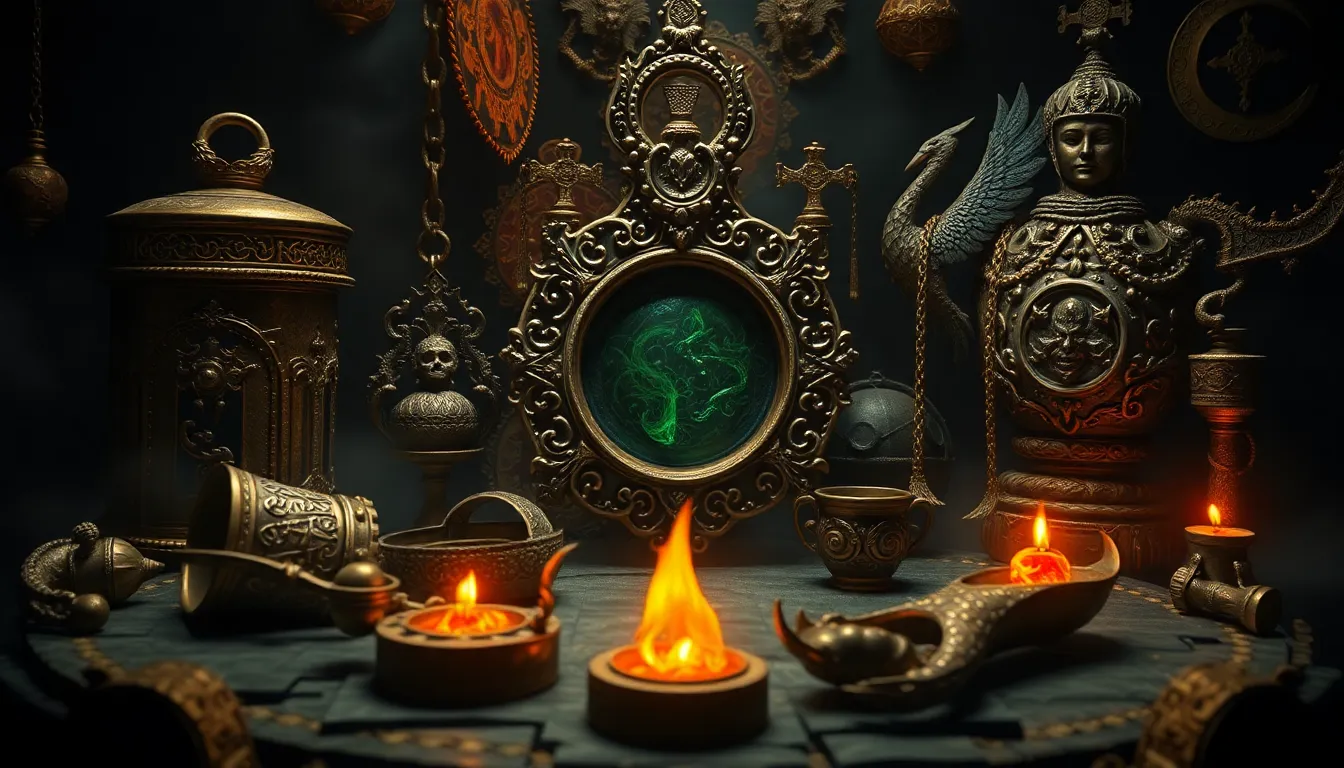Cursed Artifacts: The Most Dangerous Items in History
1. Introduction to Cursed Artifacts
Cursed artifacts are objects that are believed to bring misfortune or tragedy to their owners or those who come into contact with them. This concept has intrigued humanity for centuries, leading to a rich tapestry of stories and beliefs surrounding these items.
Historically, many cultures have attached significance to certain objects, attributing supernatural powers or divine retribution to them. The fascination with cursed objects is prevalent across various cultures, often reflected in literature, folklore, and film.
2. The Origins of Cursed Artifacts
The belief in cursed artifacts can be traced back to ancient civilizations. Many cultures believed in curses as a means of enacting revenge or expressing anger from deities or the spirits of the deceased.
- Ancient Egypt: The Egyptians often buried their pharaohs with items believed to protect them in the afterlife, leading to curses for those who disturbed their rest.
- Indigenous Cultures: Various indigenous peoples have stories of cursed items that bring misfortune to those who possess them without proper respect or understanding.
Famous legends, such as the curse of the Hope Diamond or the treasures of King Tutankhamun, have captured public imagination, further embedding the idea of cursed artifacts into our collective consciousness.
3. Notable Cursed Artifacts Throughout History
The Curse of the Pharaohs: The Tomb of Tutankhamun
The discovery of King Tutankhamun’s tomb in 1922 is often cited as a prime example of a cursed artifact. Following its opening, several individuals associated with the excavation died under mysterious circumstances, leading to widespread speculation about a curse.
The Hope Diamond: A Gemstone with a Dark Legacy
The Hope Diamond, a stunning blue gemstone, is said to carry a curse that brings doom to its owners. Many previous owners have met tragic fates, including financial ruin and untimely deaths.
The Bell of the Black Nun: A Haunted Church Bell
This bell, located in a church in Mexico, is associated with a tragic tale of a nun who fell in love with a priest. It is said that anyone who rings the bell will suffer misfortune.
4. The Science Behind Curses: Psychological and Sociological Perspectives
From a psychological standpoint, the belief in curses can be explained through the lens of cognitive biases and the power of suggestion. People may attribute negative outcomes to cursed objects, reinforcing their belief in the curse.
Sociologically, the folklore surrounding curses serves as a means of social control, cautioning individuals against certain behaviors or practices.
- Case Studies: There are numerous documented instances where individuals have reported negative experiences after acquiring cursed artifacts, showcasing the power of belief.
- Suggestions: Many psychologists argue that the fear of curses can lead to self-fulfilling prophecies, where individuals inadvertently create the very outcomes they fear.
5. Modern-Day Cursed Artifacts
The Dybbuk Box: A Jewish Folklore Artifact
The Dybbuk Box is a wine cabinet said to be haunted by a dybbuk, a malicious spirit in Jewish folklore. The box’s history is filled with strange occurrences and unfortunate events linked to its owners.
The Haunted Mirror of Myrtles Plantation
This mirror is believed to contain the souls of former slaves who were wronged. Visitors have reported seeing ghostly figures and experiencing unsettling sensations when near the mirror.
The Annabelle Doll: A Infamous Case in Paranormal History
Annabelle is a doll that is said to be possessed by a demonic spirit. It is housed in a glass case at the Warren’s Occult Museum, where it is believed to cause harm to those who handle it improperly.
6. Protecting Against Cursed Artifacts
Various cultures have developed beliefs and practices to ward off curses. Common methods include:
- Rituals: Ceremonies designed to cleanse or protect individuals from negative influences.
- Amulets: Objects believed to have protective properties against curses.
While many people believe in the effectiveness of these practices, scientific skepticism often prevails, suggesting that the power of belief plays a significant role in the perception of curses.
7. Collections and Museums: Where Cursed Artifacts Reside
Several renowned museums around the world house cursed artifacts, including:
- The British Museum: Home to numerous ancient artifacts, some of which are said to be cursed.
- The Warren’s Occult Museum: Contains items associated with paranormal events, including the infamous Annabelle doll.
The ethics of displaying cursed items is often debated, with concerns about the impact on visitors. Some report unsettling experiences when viewing these artifacts, further fueling the legends surrounding them.
8. The Impact of Cursed Artifacts in Popular Culture
Cursed artifacts have made significant appearances in literature and film, often serving as central plot devices. Notable examples include:
- The Ring: A cursed videotape that leads to the viewer’s demise.
- Indiana Jones: The series features various cursed artifacts, like the Ark of the Covenant.
The media plays a vital role in perpetuating the myths surrounding cursed artifacts, often exaggerating the supernatural elements for entertainment purposes.
9. Case Studies: Infamous Incidents Related to Cursed Artifacts
Many historical events have been linked to cursed objects, including:
- The Titanic: Some believe the ship’s sinking is linked to a cursed artifact on board.
- Documented Accidents: Numerous accidents have been reported following the acquisition of cursed artifacts, leading to tragic outcomes.
Personal testimonials from individuals who have encountered cursed artifacts further illustrate the enduring belief in their power.
10. Conclusion: The Legacy of Cursed Artifacts
The intrigue surrounding cursed artifacts continues to captivate people across the globe. They serve as a reminder of humanity’s tendency to find meaning in the unknown and the mysteries of life.
As we reflect on the intersection of history and myth, cursed artifacts remain a testament to our cultural narratives, reminding us of the power of belief and the stories we create around the objects we cherish and fear.



